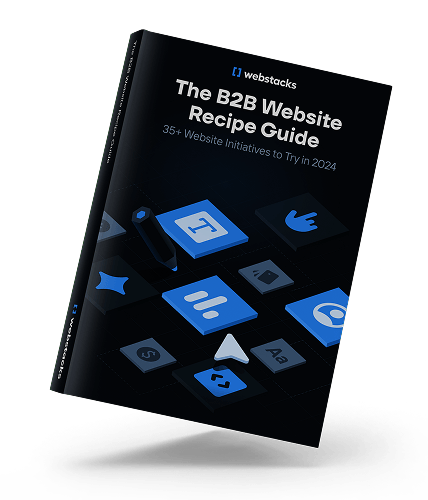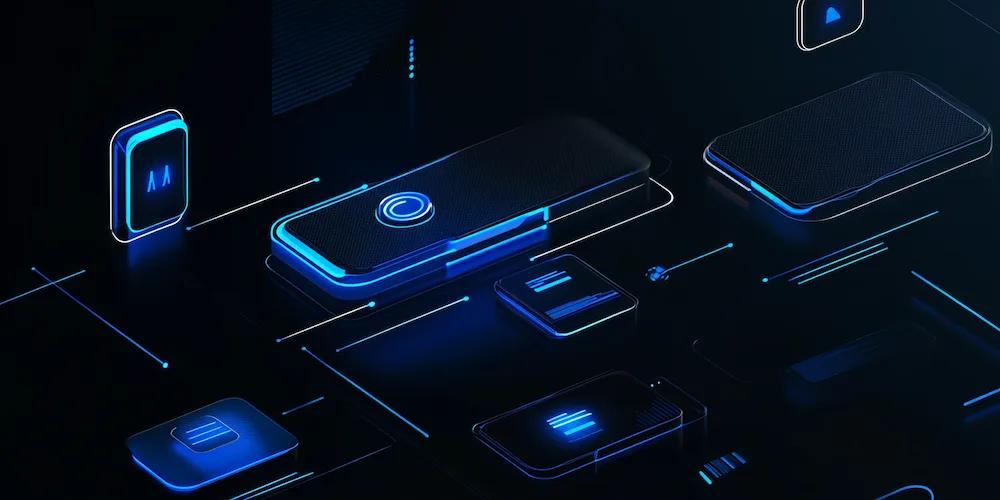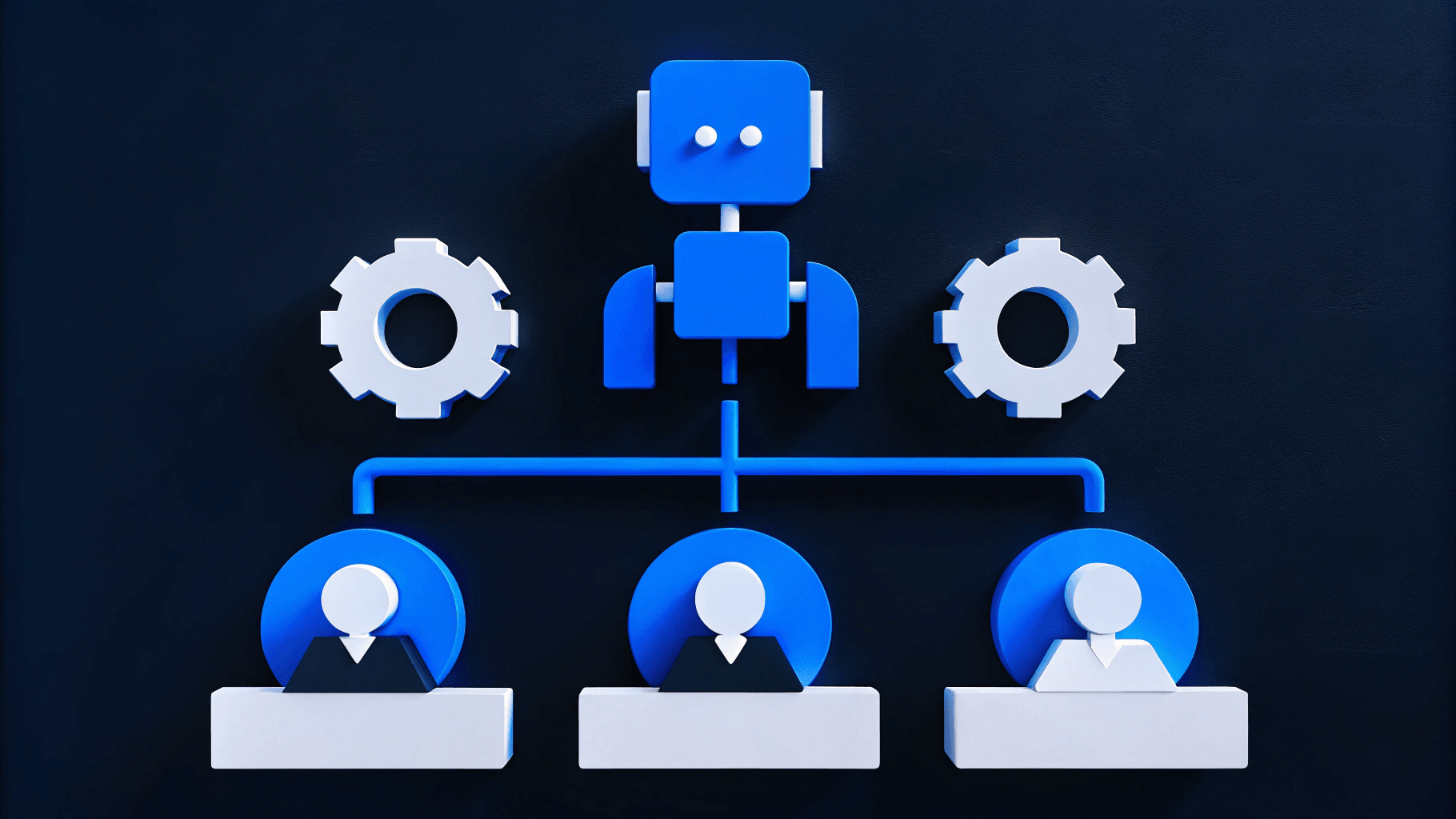Dive into this guide to uncover the features that will define successful websites in the coming years, and learn how to integrate them into your digital strategy.
In brief:
- AI-driven personalization and smart interactions will deliver tailored experiences, enhancing user engagement and satisfaction.
- Performance-optimized design focusing on speed and mobile optimization is critical for retaining users and improving conversions.
- Immersive visual experiences with 3D elements and micro-animations will make websites more engaging and memorable.
- Sustainable and accessible design practices will be key to creating inclusive and responsible websites.

12 Key Website Design Features That Will Define 2025
As we approach 2025, website design is evolving beyond aesthetic preferences into an intersection of technology, user experience, and business strategy. The digital landscape demands websites that not only look contemporary but also deliver meaningful interactions and drive business results.
For technology-forward businesses and marketing leaders, staying ahead means understanding and implementing features that will define the next generation of web experiences. With over 55% of websites now incorporating features like dark mode, it's clear that user preferences and technological capabilities are rapidly reshaping what's possible in web design.
In this guide, we'll explore 12 key features that will characterize successful websites in 2025, from AI-driven personalization to immersive 3D experiences. Each feature represents an opportunity to enhance your digital presence and create more engaging, efficient, and results-driven web experiences.
1. AI-Driven Personalization and Smart Interactions
Website personalization is evolving beyond basic user segmentation into sophisticated, AI-powered experiences that adapt in real-time. Through machine learning algorithms that analyze user behavior patterns, your website can now deliver uniquely tailored experiences to each visitor.
Dynamic content adaptation forms the cornerstone of this personalization. Your website can automatically adjust its interface, content, and recommendations based on user interactions, preferences, and historical data. For instance, returning visitors might see different homepage layouts or product suggestions that align with their previous browsing patterns. An online retailer might use this technology to recommend products based on past purchases, increasing the likelihood of repeat business. For actionable insights, consider these homepage personalization tips.
The search functionality on your website becomes more intelligent with natural language processing. Instead of simple keyword matching, your search can understand complex queries, offer predictive suggestions, and learn from user interactions to improve results over time. This allows visitors to find exactly what they're looking for, even when they're not sure how to phrase their search.
AI-powered chatbots and virtual assistants add another layer of personalization by providing immediate, contextual support. These smart interactions go beyond basic FAQ responses—they can understand complex questions, maintain conversation context, and even handle sophisticated tasks like product recommendations or technical support. For example, a chatbot on a financial services website might assist users with budgeting advice based on their account activity. The best part? They're available 24/7 and enhance their responses through continuous learning from user interactions.
For businesses, implementing these AI-driven features can significantly impact engagement and conversion rates. Understanding how to effectively implement AI in UX design is essential for delivering these personalized experiences. Moreover, embracing website personalization benefits can help in maximizing user engagement. Companies are actively enhancing user experiences with AI to stay competitive. The key is smooth integration—leveraging platforms that support personalization, such as those offering HubSpot CMS benefits, to enhance the user experience without feeling intrusive or complicated. When properly implemented, AI personalization creates a more engaging, efficient, and satisfying website experience that adapts to each visitor's unique needs and preferences.
2. Performance-Optimized Design
In 2025, website performance isn't just about speed—it's about delivering measurable business results through technical excellence. Core Web Vitals will be the cornerstone of performance optimization, with Google's metrics setting the standard: Largest Contentful Paint (LCP) for loading, First Input Delay (FID) for interactivity, and Cumulative Layout Shift (CLS) for visual stability.
The stakes are higher than ever—research shows that a mere 0.1-second improvement in load time can increase conversions by 8.4% for ecommerce sites. More critically, you'll lose 50% of your visitors if your page takes 3 seconds to load instead of 2, and that number jumps to 90% at the 4-second mark.
To achieve optimal performance, focus on these technical optimizations:
- Implement lazy loading for below-the-fold images
- Minify and defer non-critical JavaScript
- Use modern image formats like WebP with proper compression
- Use browser caching and Content Delivery Networks (CDNs)
- Optimize server response time to under 200ms
Mobile optimization is no longer optional—it's imperative. To achieve this, you need to implement responsive images with srcset attributes, use efficient code splitting, and optimize CSS delivery to prevent render blocking.
Remember, these performance optimizations aren't just technical metrics—they're directly tied to your bottom line. Recognizing the importance of UAT ensures that performance enhancements meet user expectations and drive business results. These performance optimizations are crucial for boosting SaaS website traffic and conversions. Sites that meet Core Web Vitals thresholds consistently outperform their competitors, with some businesses reporting conversion rate increases of up to 33% after implementing performance optimizations.

3. Immersive Visual Experiences
Modern website design is evolving beyond static layouts to create deeply engaging visual experiences through sophisticated interactive elements. By incorporating 3D visuals, micro-animations, and thoughtful motion design—often made possible by advanced UX design tools—you can craft websites that capture attention and guide users through your content in meaningful ways.
Three-dimensional visuals and augmented reality (AR) elements add depth and interactivity to your design. This is particularly valuable for e-commerce platforms where interactive 3D product previews can significantly enhance the shopping experience. For example, furniture retailers using AR can allow customers to visualize how a sofa would look in their living room, leading to more confident purchasing decisions.
Micro-interactions play an important role in making your website feel more responsive and alive. Subtle animations like nuanced hover effects, responsive loading indicators, and animated icons provide immediate feedback to user actions. For instance, a health app might use micro-animations to illustrate progress towards fitness goals, keeping users engaged and motivated.
Multi-layered scrolling and parallax effects create a sense of depth that transforms simple scrolling into an engaging storytelling mechanism. Such techniques are particularly effective for brand narratives or product journeys, including interactive landing pages, where you want to guide users through content in a visually compelling way.
However, while implementing these immersive elements, it's important to balance visual appeal with performance. Optimize your animations and interactive features so they enhance rather than hinder the user experience, particularly on mobile devices. The goal is to create a website that's visually stunning while maintaining fast loading times and smooth performance across all platforms.
When thoughtfully implemented, these visual elements work together to create a more engaging and memorable website experience, encouraging users to explore content more deeply while maintaining functional usability.
4. Sustainable and Accessible Design
In 2025, responsible web design will prioritize both environmental sustainability and inclusive accessibility. By optimizing your website's performance through energy-efficient coding practices and streamlined user journeys, you'll reduce its carbon footprint while improving the user experience. This includes compressing media assets, implementing efficient caching strategies, and eliminating unnecessary page loads.
Accessibility is no longer optional—research shows that 94% of top-grossing sites have compliance issues with basic accessibility requirements. To make sure your website serves all users effectively, implement these key features:
- High contrast modes and sufficient color contrast ratios
- Screen reader compatibility with proper HTML semantics
- Keyboard navigation support for motor-impaired users
- Captions and transcripts for multimedia content
- Clear form labels and error messages
Implementing these accessibility improvements expands your market reach, enhances SEO performance, and reduces legal risks. Combined with sustainable practices, they demonstrate your commitment to responsible digital development while potentially lowering hosting costs through improved efficiency.
Remember that both sustainability and accessibility start with thoughtful design decisions. Prioritize clean code, optimize resource usage, and test with diverse user groups to create a website that's environmentally conscious and universally accessible.
5. Future-Ready Architecture
A website's architecture is the foundation that determines its ability to grow and adapt with your business. Choosing the right CMS is a crucial part of building this foundation. In 2025, future-ready architecture will be characterized by composable design principles that allow you to easily modify, scale, and enhance your website as needs evolve.
At the core of modern website architecture is the ability to handle increasing traffic and functionality demands without compromising performance. With mobile devices now accounting for over 50% of global internet traffic, your architecture must support fast loading times across all devices—ideally under 2 seconds to maintain user engagement.
Composable architecture, supported by modern Enterprise CMS platforms, gives you the flexibility to integrate emerging technologies and new features without rebuilding your entire website. A modular approach, as detailed in our Modular web design guide, allows you to:
- Swap out components independently
- Scale specific sections based on demand
- Integrate new technologies like AI and AR smoothly
- Maintain performance as you add functionality
Understanding the differences between Headless CMS vs Traditional CMS can help you choose the right system to support a composable architecture. This adaptability is especially important for industries like fintech, where content strategies need to be agile to meet evolving market demands.
Such a dual approach allows your marketing team to make routine content updates while maintaining the ability to implement sophisticated functionality as your business grows.
Our Take on Essential Website Design Features
At Webstacks, we've observed firsthand how rapid technological advancements are reshaping the web design landscape. The features highlighted in this article aren't just trends; they're becoming necessities for businesses aiming to connect meaningfully with their audiences. AI-driven personalization, performance optimization, immersive visuals, sustainability, accessibility, and future-ready architectures are integral to creating websites that stand out in 2025 and beyond. We believe that integrating these elements thoughtfully can significantly enhance user engagement, drive conversions, and position your brand at the forefront of digital innovation. Our team is dedicated to helping businesses thrive in this evolving landscape with expertise and cutting-edge solutions.

Conclusion
As we approach 2025, website redesign has evolved into a complex intersection of user experience, technology, and business strategy. Success requires careful planning, from initial audit through post-launch optimization, typically spanning 4-9 months for complete implementation.
To get started, assess your current website's performance, set clear objectives, and determine your resource requirements—whether that's a basic refresh starting at $2,000 or a comprehensive overhaul exceeding $50,000. Consider working with experienced professionals who can guide you through this process, helping your redesign incorporate the latest trends while maintaining focus on your business goals.
Ready to transform your website for 2025? Our team at Webstacks specializes in creating modern, high-performing websites that drive results. Contact us to discuss your website redesign project.




